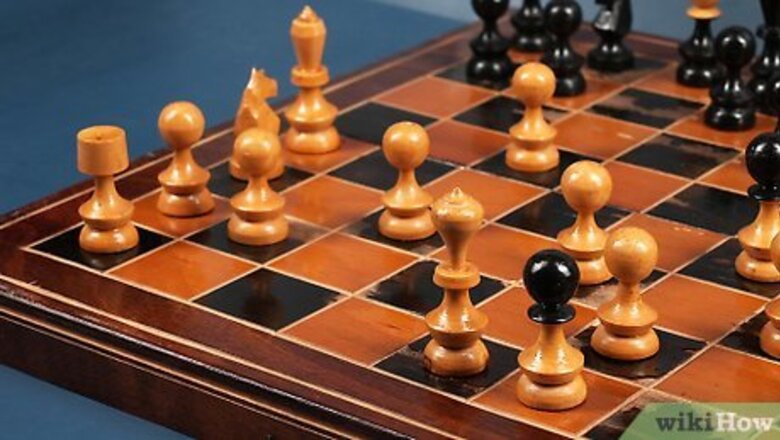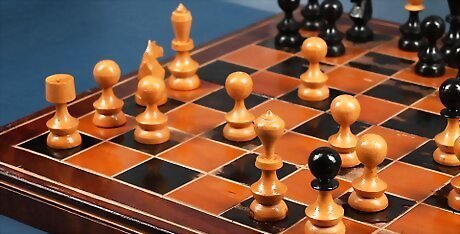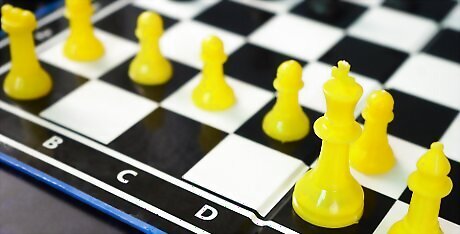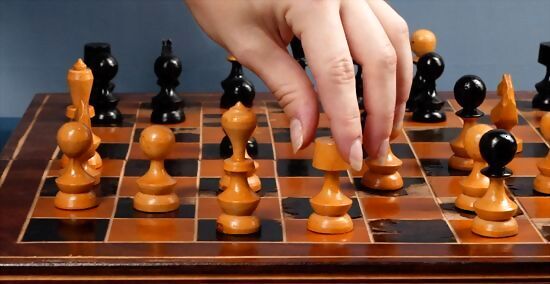
views
- To castle, move your king 2 spaces toward your rook. Pick up your rook and set it on the other side of the king.
- Make sure that the spaces between the rook and king are empty, the king and rook are unmoved in their starting squares, and the king isn’t in check before castling.
- Try castling as early as you can in the game to defend your king. Alternatively, build up an offense near the center of the board before castling.
Rules for Castling in Chess

Check the board to see if you meet the requirements for castling. While you can castle at any point during the game, the board and your pieces must meet 4 conditions, or else you must make a different move. If you’re able to satisfy all the requirements, then you’re allowed to castle on your turn. The 4 conditions are: All the spaces between the rook and king need to be empty. To castle kingside with the closest rook, move the bishop and the knight somewhere else. For castling queenside with the furthest rook, move the bishop, knight, and queen out of the way first. If your opponent has pieces in the way, you cannot castle. Your king and rook must be unmoved in their original squares. If you already moved your king or your rook, you’re no longer able to castle. If you move one rook, you may still castle with the other. Your king must not currently be in check. Check if any enemy pieces are putting your king in check. If your king is safe, then it can castle. If the rook is threatened, you can still castle. Your king cannot move through a space attacked by an enemy piece. If any spaces between your king and rook are under attack, you’re not allowed to castle.

Move your king 2 spaces towards the rook. As long as you meet all 4 conditions, you may castle with either of your rooks. No matter if you’re castling kingside or queenside, always move your king over 2 spaces closer to the rook. When you castle kingside, your king will end on g1 if you’re playing white or g8 if you’re playing black. If you castle queenside, your king ends on c1 if you’re playing white or c8 if you’re playing black. Always move your king first when you’re castling because if you touch your rook first, you must only move that piece. If you’re playing chess online, click on the king and move it to the ending space to castle.

Move your rook to the other side of the king. In the same turn, pick up the rook in the corner of the board you moved towards, and set it in the space on the opposite side of your king so the pieces are next to one another. When you castle kingside, the rook ends on f1 if you’re playing white and f8 if you’re playing black. If you castle queenside, the rook will replace the position of the queen.
When to Castle

Try to castle as soon as possible so your king stays defended. Start moving pieces out from in between your rook and king as soon as you’re able to so you’re able to develop a strong defensive position. Waiting until later in the game when you move your pawns and lose pieces gives your opponent more opportunities to put you in check and prevent you from castling. Try to leave a few pawns or pieces in front of the empty spaces so your king doesn’t get targeted for an attack. For the fastest play, try to castle kingside because there are fewer pieces and it’ll take fewer turns.

Castle early to free your rook and take the offensive. Your rooks are some of the most powerful pieces in chess after your queen, but it can be one of the most difficult pieces to get into play. If you want to have more mobility toward the center of the board and put more pressure on your opponent, castle early on so your rook is available to use. Just be careful about leaving your king stuck behind a wall of pawns. Your opponent could easily move their rook or queen to the same row and put you in checkmate. Try to castle your queenside rook if you’re able to because you’re moving it more spaces and placing it in the center, which helps you control and defend the board more easily.

Wait to castle so you can focus on attacking the center of the board. Controlling the center of the board is important for preventing your opponent from placing powerful pieces there. Rather than taking the defensive right away, consider positioning your pieces to target squares in the middle of the board, but leave your king and rooks in place. When you notice your opponent starting to take the offensive and placing their pieces near the center of the board, then castle when it’s your turn so your king stays protected. Try to leave a few pieces in front of your king so it doesn’t become an easy target.

Castle on the opposite side from where your opponent is attacking. If the other player has pushed pieces forward on the queenside of the board, then castle kingside. Alternatively, if your opponent is attacking on the kingside, try to castle on the queenside. That way, you don’t accidentally corner your king into an attack.

















Comments
0 comment